« The cost of Tim Frazier and observations
The Process and the Losses »
The Pels’ Supporting Cast and Their Missing Second Lead
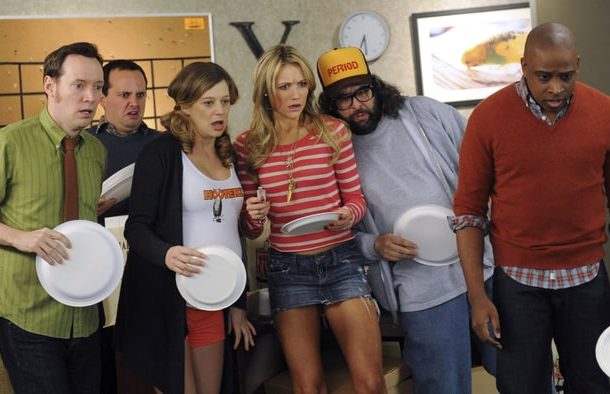
Much has been made of the Pelicans supporting cast, or apparent lack thereof, recently. If you’re on this blog, you’re sure to have heard, at least a dozen times, “I feel sorry for Anthony Davis! He has such a terrible supporting squad around him! And so they keep losing games… I hope he gets traded to LA…” Maybe I embellished a bit at the end.
The idea is enticing in its simplicity. One guy is playing at an incredible level, but his team just can’t seem to win. How can that happen? AD obviously can’t be to blame for all the losses. So the only other thing we can see on the floor, i.e. his teammates, must be to blame for the 0-5 start. Again, it’s simple, but is it true at all? I mean, does Anthony Davis have less of a supporting cast than other super stars in the NBA? Should we all really feel sorry for him? And if we don’t tar and feather the Pelicans bench, who can we blame?
Let’s take a look at some data.
Super Stars
The data used is from last season, and I pared it down to players who logged at least 525 minutes to brush off some outliers. Let’s start by defining “super star” so we can determine who are AD’s peers. Then, we can compare their teammates. To keep things simple, I’m going to generally define a super star as basically any player equal to or past the Anthony Davis line in the graph below.
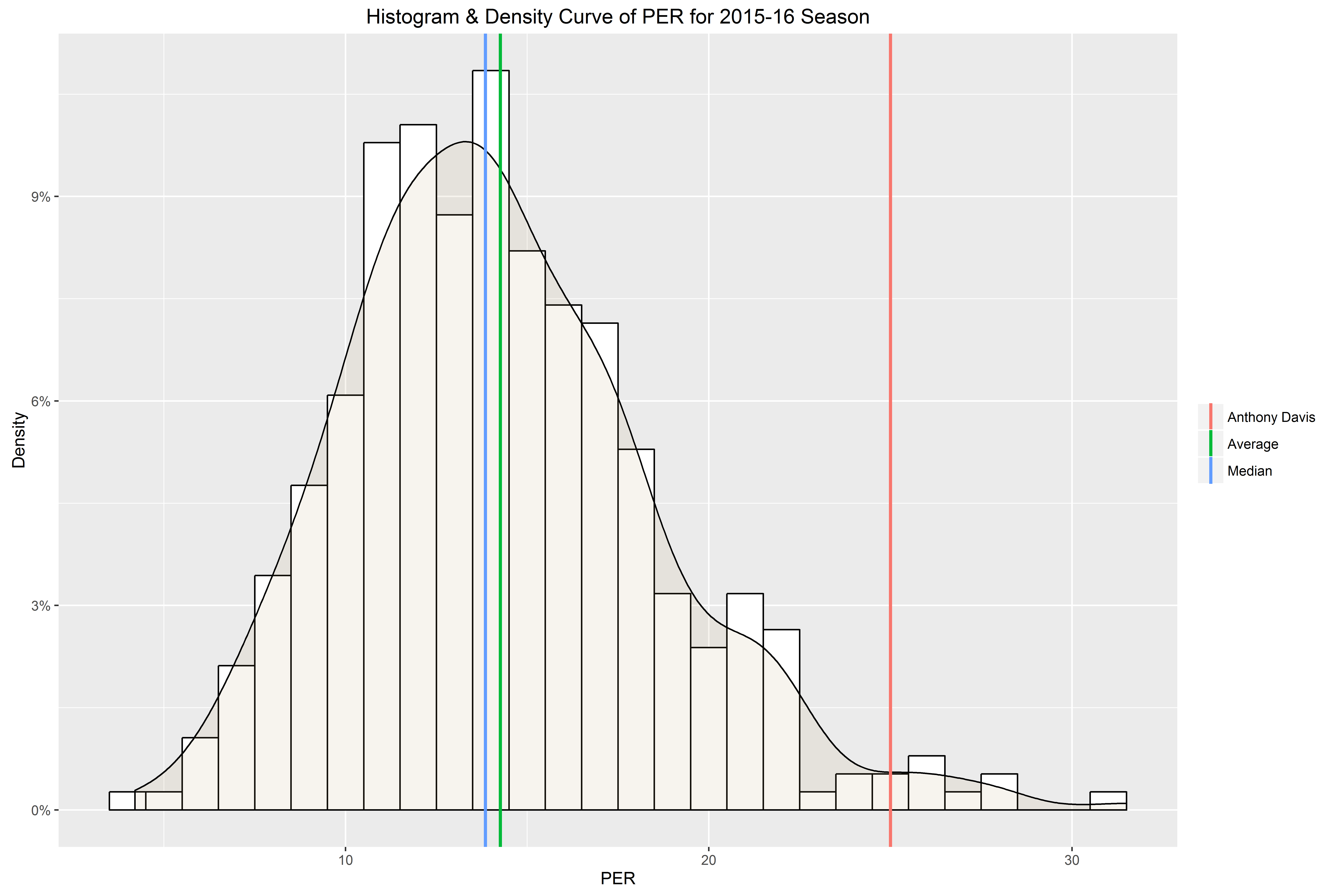
That’s not many guys. If we limit our data set to players with a PER of 24.9 or better and a Ws/48 of .150 or better, we have the following list of 9 players:

Again, that’s a pretty limited, but strong list. The only possible impostor is Hassan Whiteside, but we will come back to that. I promise. The first point to note should be that OKC had 2 of our top 9 players. That trend obviously continued when KD left Russ to join Steph. Condolences, OKC. This seems to be a significant point when comparing Anthony Davis’ cast next to other super stars. Some of these stars and super stars are clustered on the same teams. More on that later. For now, let’s continue with this as our list of the top of the top tier NBA players.
Comparisons
It’s hard to parse the exact criticism against the Pelicans’ bench and non-AD players. I’m assuming the criticism is both depth and level of talent compared to teams with other super stars, because that seems to be the crux of the issue. The idea is that AD doesn’t get the on-court support of other super stars, and no one likes to watch him struggle as everyone else drops the ball.
First, let’s compare the supporting casts of teams with a super star and teams without a star.
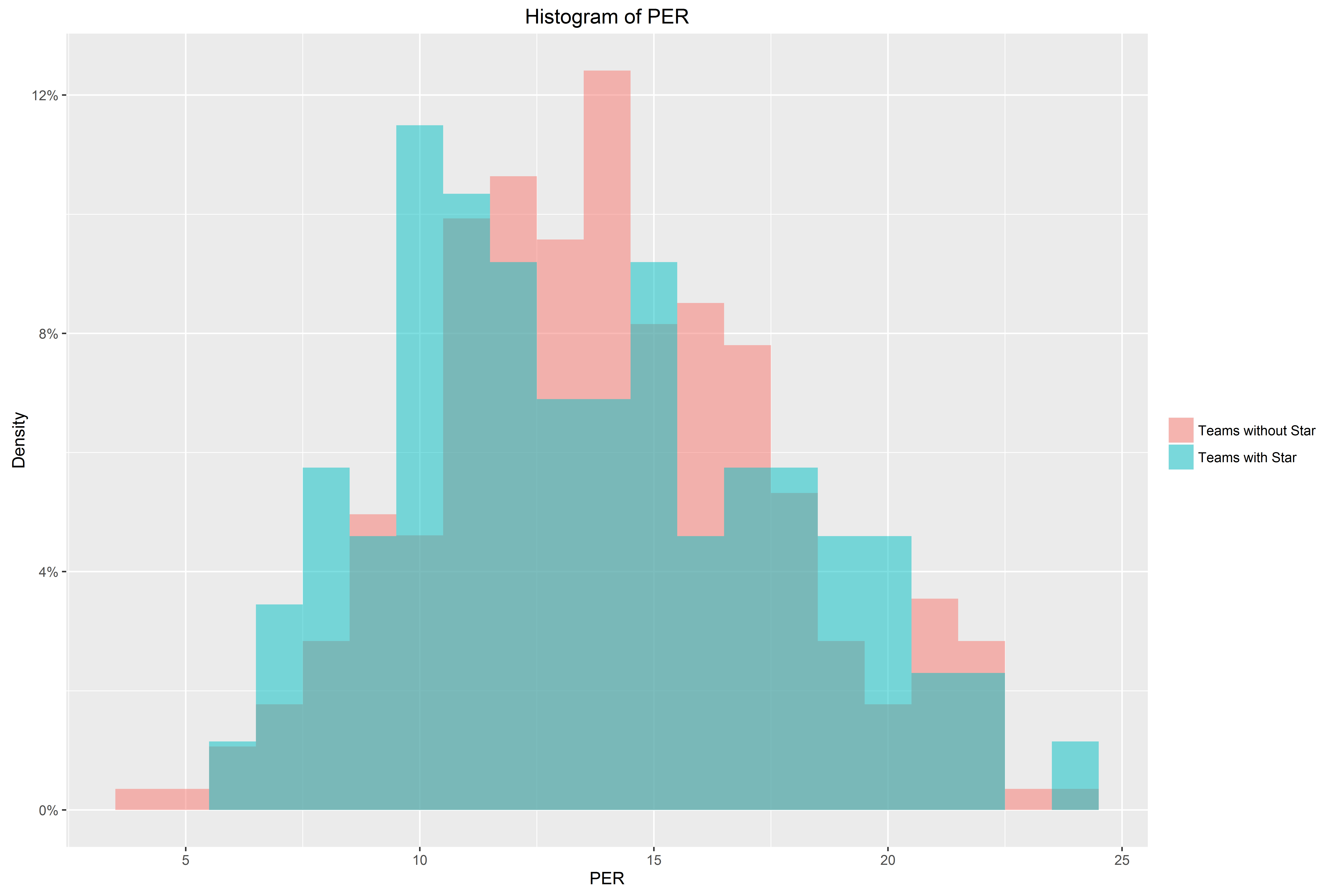
To be clear, these two histograms have been normalized (i.e. in terms of percent rather than count) so we can compare the proportions of players at each level. Also, the super stars have been removed from the blue histogram as we are only interested in their supporting casts.
Immediately, there is a clear difference in the supporting cast make up between teams with and without super stars. For one, the teams without a super star feature more players around the 13-15 PER range, which tells us something about the right side of the chart. In a more balanced basketball world, one might expect to see that the teams without the top tier stars would have a good helping of the second tier stars. That’s clearly not the case here. In fact, once you hit the 16 PER range, teams with a super star have relatively more players.
Now, there could be an internal bias here. Super stars may make stars. In other words, many of the players showing up from 17 to 23 may be there because they play with an otherworldly talent like LeBron James, and there are some credible reasons to think this is true. Many super stars do make the players around them better, and if that’s the Pelicans problem, then perhaps AD is more to blame than those around him.
I, however, am not really moved by this super star effect argument, at least not completely. For one, many of the guys in that range, were at a similar level before they played with a super star, and many others remained at a similar level when they stopped playing with super stars. At any rate, it’s a difficult thing to suss out exactly how much credit a super star teammate deserves for another teammate’s success. So let’s leave it at this, teams with super stars generally seem to have stars and above average guys.
What does this really tell us about the Pelicans? Not much. So let’s break out the Pelicans from the super star team set and draw the same graph. This time let’s limit it to current Pelicans players vs. teams with a super star.
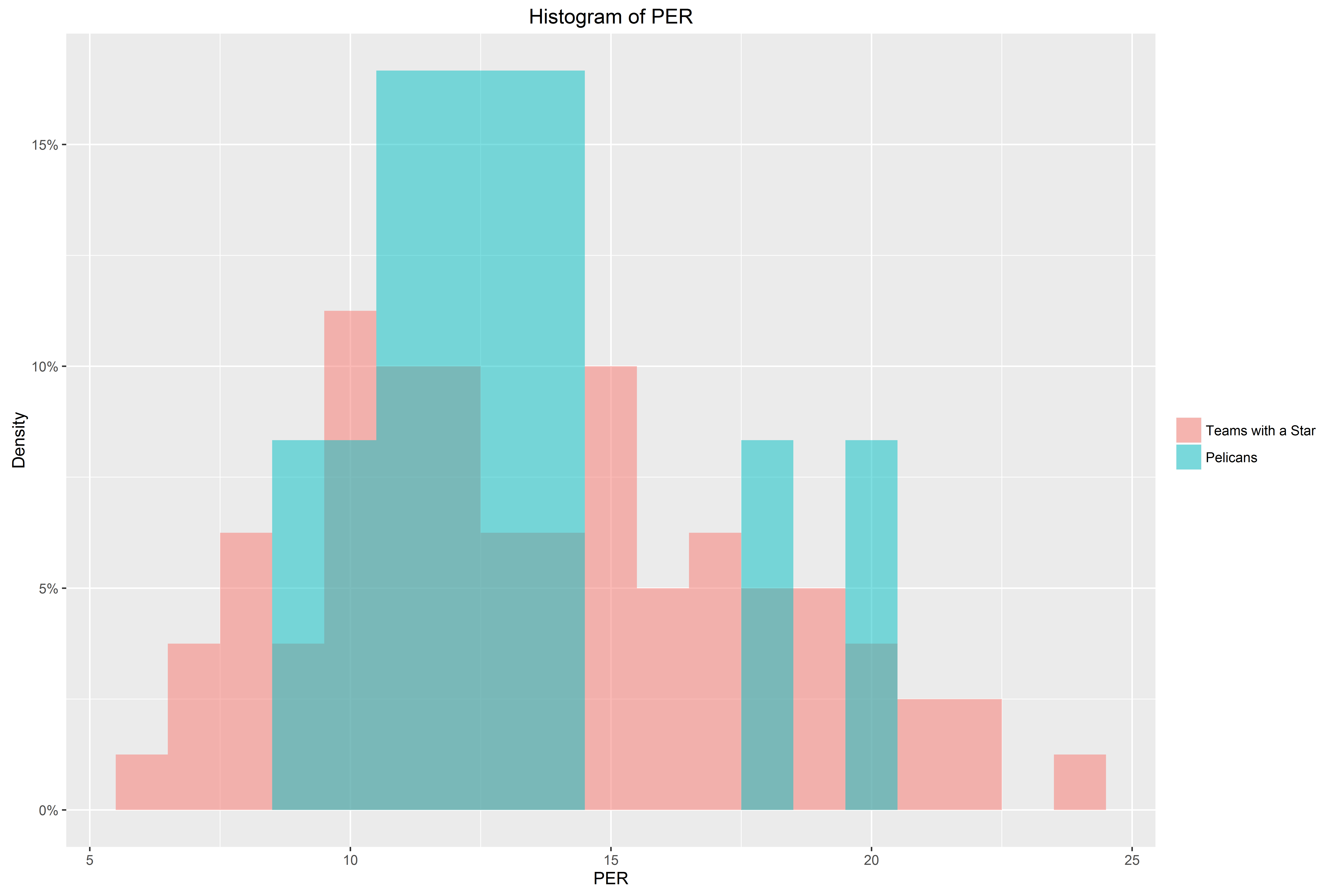
Let’s break these histograms into halves, and yes, the Pelican’s looks odd because of the limited number of data points. Still, there’s clearly some good information. Starting from the left and going to around 13 to 14, the mean of our data set, it is clear that the Pelicans have more below average to average players. That’s actually a significant improvement over last year, when Kendrick and Gee, a big minutes player, were both well below a PER of 10. Furthermore, the Pelicans actually have a pretty dense concentration of competent NBA players. Unlike other teams, who have a cluster of guys below a PER of 8. These players are likely just roster filler. At any rate, you can’t fault the Pelicans for a lack of depth for average players. I think getting those average guys was a big part of Dell’s plan, and you can see it here as several of the guys in that big green/blue rectangle were added this off-season (Moore, Hill, and Galloway).
It’s a different story on the right hand side. Those two bars represent two players, and those two guys are way out numbered by the other players around them. To put a finer point on it, the Pelicans need to add a few guys on the right side of that curve to keep the pace with other teams. To make mattes worse, those guys are Jrue Holiday and Tyreke Evans. Neither are playing right now, and who knows about Tyreke long term. Yeah, the Pelicans need a right half of that graph.
Closing Thoughts
But this isn’t all about injuries. It does seem, however, to be all about who isn’t there. In the opening, I claimed that people were blaming one of the two groups, AD and his supporting cast, that they saw on the court. I think the issue is more with the players that aren’t there due to injury or just not being signed or traded for yet. See, relatively speaking, the Pelicans have a strong supporting cast when it comes to the guys after a super star team’s typical third best player. Unfortunately, they don’t currently have a second or third best player. To make my point, here are the players on the teams with a super star that have a PER above 19.
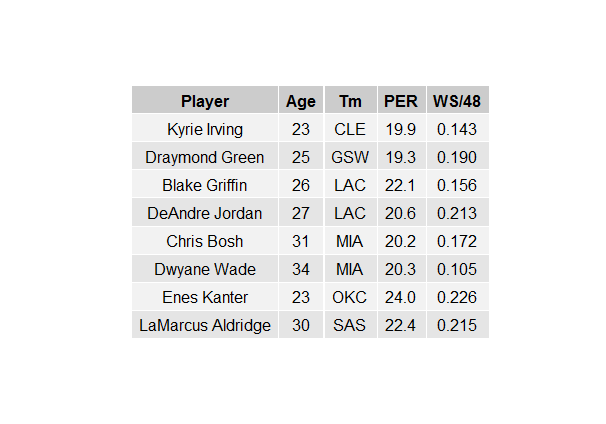
Note, this list doesn’t even include Klay Thompson or Kevin Love. Also, remember Whiteside on our first list? Well, he had two teammates on this one. Their were probably some compounding effects. At any rate, the issue isn’t that the Pelicans lack a supporting cast. What they really lack is a second leading man. They need a Jack to AD’s Liz Lemon, a Peggy to his Don, and whatever other TV reference works here.
Granted, the Pelicans will get Jrue Holiday back at some point, and I’ve long said that I think he is the third best player on this team long term. That will solve some immediate problems. Still, the long term question has to be about finding that second player. Let’s assume Dell Demps, who knows more about basketball than I could ever hope to learn, has also seen this data or, at least, reached a similar conclusion about AD’s running mates. Surely, he would have developed a plan to purse a second for AD, right? I think he has, and I think a major goal of this trade deadline and next off-season is putting the pieces in place to bring in that second guy. But that’s a post for another day.





One Comment